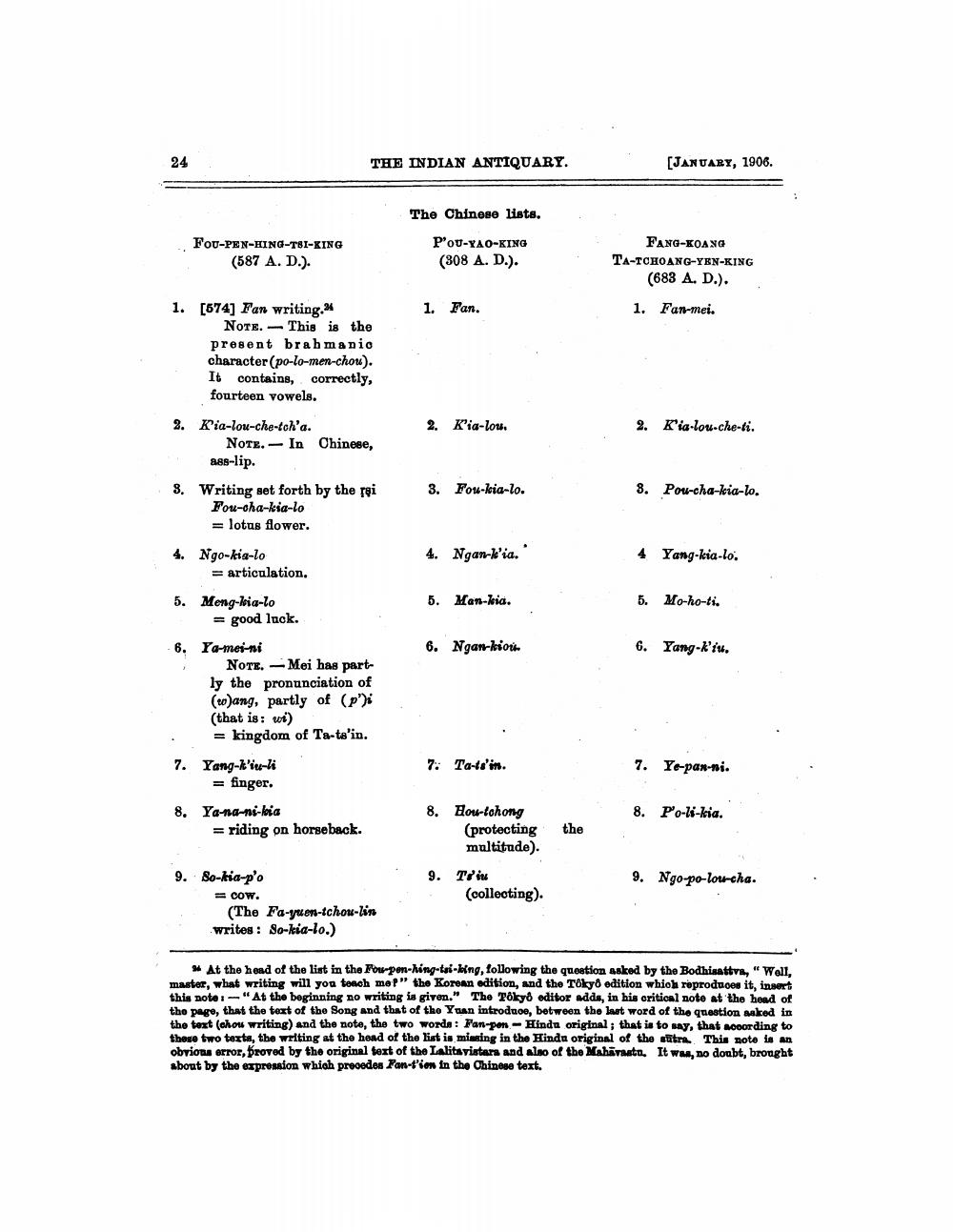________________
THE INDIAN ANTIQUARY.
(JANUARY, 1906.
The Chinese lists,
FoU-PEN-HING-T8I-KING
(587 A. D.).
POU-YAO-KING (308 A. D.).
FANG-KOANG TA-TCHOANG-YEN-KING
(683 A. D.). 1. Fan-mei.
1. Fan.
1. [574] Fan writing. 24
NOTE. This is the present brahmanio character (po-lo-men-chou). It contains, correctly, fourteen vowels.
2.
K'ia-lou.
2.
K'ia-lou-che-ti.
2. K'ia-lou-che-tch'a.
Note. - In Chinese,
ass-lip. 3. Writing set forth by the sại
Fou-cha-kia-lo = lotus flower.
3. Fou-kia-lo.
8. Pou-cha-kia-lo.
4. Ngan-k'ia.
4
Yang-kia-lo.
5. Man-kia.
5. Mo-ho-ti.
6. Ngan-kion
6.
Yang-k'tu.
4. Ngo-kia-lo
= articulation. 5. Meng-kia-lo
= good luck. 6. Ya-mei-ni
NOTE. - Mei has partly the pronunciation of (to)ang, partly of (p) (that is: wi)
= kingdom of Ta-te'in. 7. Yang-k'iu-li
= finger. 8. Ya-na-ns-laia
= riding on horseback.
7:
Ta-te'in.
7. Ye-par-ni.
8. Po-li-kia.
the
8. Hou-lohong
(protecting
multitude). 9. T'iu
(collecting).
9. Ngo-po-low-cha.
9. 80-kia-p'o
= cow.
(The Fa-yuen-tchou-lin writes: So-kia-lo.)
* At the head of the lint in the Fou pon-hing-tai-ling, following the question asked by the Bodhisattva, "Well, master, what writing will you tonoh mo?" the Korean edition, and the Toky8 edition which reproduce it, insert this note: - "At the beginning no writing is given." The Tokyo editor adds, in his critical noto at the head of the page, that the text of the song and that of the Yuan introduoe, between the last word of the question miked in the text (chou writing) and the note, the two words: Fan-pon-Hindu original; that is to say, that woording to those two texta, the writing at the head of the list is missing in the Hindu original of the litre. This note is an obvions error, proved by the original text of the Lalitavistars and also of the Maharasto. It ww, no doubt, brought about by the expression which precedes Fan-t'ion in the Chinese text.




